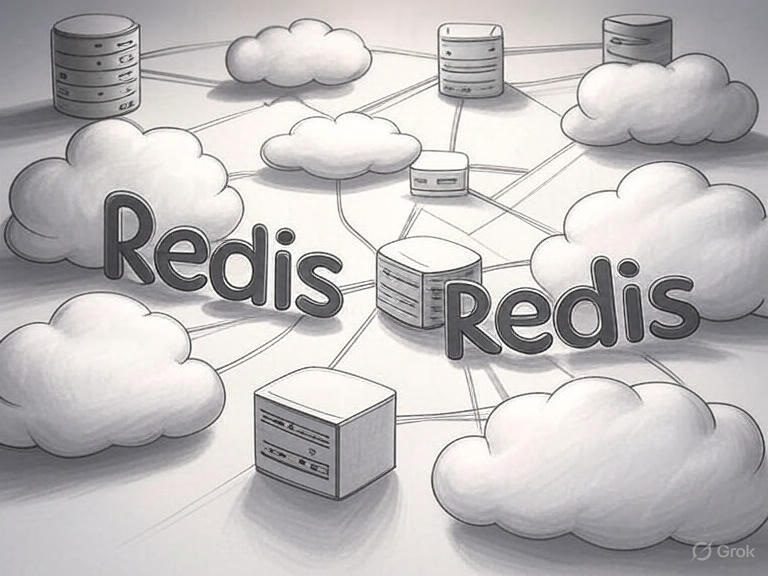Introduction to productivity in web development
Web Developer Productivity Tools are essential for developers as they help streamline the development process, reduce errors, help with testing the code and ultimately, enable better management of time and resources.
The importance of productivity tools for web developers
Web Developer Productivity Tools can greatly enhance the workflow of a web developer. From code editors that suggest syntax and corrections, to project management tools that keep teams on track, but also communication and time management tools, these utilities are integral to every modern web developer.

Essential productivity tools for every web developer
Code editors and integrated development environments (IDEs)
Code editors and IDEs are the primary tools for any developer. They provide a robust environment where you can write, edit, test, and debug code. Popular choices include Visual Studio Code, Sublime Text, and JetBrains IntelliJ IDEA. In the past the market was driven by Adobe’s Dreamweaver, but since then more simplified and free tools took over.
Version control systems
Version control is crucial for managing changes to a project without disrupting the integrity of the codebase. Git remains the most popular system, often coupled with platforms like GitHub or Bitbucket, but also visualstudio.com for collaboration. These tools are essentially made for sharing code with others, creating branches and user commits, and they will keep your project more advanced and sophisticated.
Browser developer tools
Integrated in most modern browsers, these tools allow developers to inspect HTML, CSS, and JavaScript running in the browser, tweak them in real-time, and diagnose problems. In most modern web browsers the F12 keyword button will launch the DevTools and Code Inspector.
API development environments
Tools like Postman and Swagger simplify working with APIs by providing functionalities to build, test, and document API services effectively. Although the payed services and packages will have more advanced functionalities, you can survive and in fact do a great job with the free versions as well.
Code enhancement tools
Code linters and formatters
Linters such as ESLint and formatters like Prettier help maintain code quality by enforcing style guidelines and finding potential errors in code. ESLint is undoubtedly my preferred extension for Visual Studio Code, particularly for its exceptional capabilities in code alignment and structuring.
This extension not only enforces best coding practices but also ensures consistency across the entire codebase. It automatically identifies and fixes syntax errors, making it an indispensable tool for developers aiming to improve code quality and maintainability. Additionally, ESLint’s customizable rules allow for seamless integration into any project, enhancing productivity and efficiency.
Preprocessors and compilers
Sass for CSS, Babel for JavaScript, and other preprocessors transform code into a usable format compatible with different browsers and platforms.
Libraries and frameworks
Frameworks like Angular, React, and libraries like jQuery are fundamental in modern web development, offering pre-written code snippets to solve common coding tasks.
If you are curious in finding out more about these frameworks I invite you to read my comprehensive guide to web application development, focused mostly on Angular.
Efficient code testing tools
Unit testing frameworks
Frameworks like Jest and Mocha are designed for performing small, isolated tests to ensure individual units of code function correctly.
End-to-end testing tools
Tools such as Selenium and Cypress provide a mechanism to test workflows from start to finish, mimicking user interactions with the application.
Performance testing tools
WebPageTest and Google Lighthouse are tools that help analyze the performance of a website and identify potential bottlenecks. Solving the issues highlighted by these tools will definitely help with making your website or web app smaller, faster and more interactive which will boost your search engine ranking as well.
Project management and collaboration tools
Issue trackers and project management software
Jira and Trello help teams manage projects, track tasks, and collaborate in real time.
Jira is renowned for its robust feature set that caters to agile project management needs, supporting scrum, kanban, and mixed methodologies. It allows teams to create user stories, plan sprints, track issues, and manage releases with precision. The tool’s customizable workflows and extensive integration capabilities make it a favorite among software development teams.
Trello offers a more visual approach with its card-based layout, which is excellent for managing lighter projects and workflows. It enables users to organize tasks on boards and move them through different stages quickly, from conception to completion. Trello’s simplicity and intuitive design make it ideal for individuals and teams looking for an easy-to-use and flexible project management tool.
Both tools have powerful collaboration features, including commenting, attachments, and real-time updates, ensuring that all team members are aligned and informed. Whether managing complex software development cycles with Jira or handling diverse projects with Trello, these tools significantly enhance productivity and project visibility.
Real-time collaboration tools
Slack and Microsoft Teams facilitate communication across teams, making it easier to manage projects and day-to-day tasks. These integral communication platforms facilitate seamless interaction across teams, streamlining both project management and daily operations. These tools offer a range of functionalities designed to enhance team collaboration and efficiency.
Slack is known for its highly configurable channels that can be set up for different projects, topics, or teams, ensuring relevant discussions are organized and accessible. It also supports direct messaging and group conversations, which are essential for quick communications. Beyond text-based messaging, Slack offers voice and video calling features, file sharing, and integrates with numerous other tools like GitHub, Trello, and Salesforce, creating a centralized hub for all team interactions and resources.
Microsoft Teams provides a comprehensive suite that integrates deeply with Office 365 applications, making it particularly valuable for organizations entrenched in the Microsoft ecosystem. It supports chat, meetings, calls, and live events, all within a single interface. Teams enhance collaboration by allowing users to co-author documents in real time, share screens during meetings, and use tabs to keep important files and applications readily available. Additionally, its robust security measures ensure that all communications are secure and compliant with organizational standards.
Both platforms are equipped with bot and automation capabilities, which can streamline routine tasks and notifications, thus increasing productivity and allowing teams to focus more on critical work. Whether it’s organizing conversations, managing tasks, or integrating with other software, Slack and Microsoft Teams are pivotal in fostering effective team collaboration and project management.
Documentation tools
Without documentation, understanding a codebase or an entire project can be very difficult, challenging, if not impossible. Every good engineer, coder, project manager knows that writing a good and thorough documentation is essential for the success of the project and it will help the team members on the long run. A well-documented project, code ensures clarity, facilitates maintenance, and aids in seamless transition among teams.
Confluence and Docusaurus help in creating, organizing, and managing project documentation, keeping all team members on the same page.
Time management tools
Pomodoro timers and task managers
Tools like TomatoTimer and Todoist help manage time effectively, using techniques like the Pomodoro Technique to break work into intervals.
Time tracking software
Time tracking software, such as Toggl, tracks the amount of time spent on various tasks, aiding in project management and billing. Having a time tracker tool is imperative if your rate is hourly based.
Optimizing the development environment
Customizing IDEs for maximum efficiency
Optimizing an IDE with plugins and settings tailored to your workflow can significantly enhance productivity.
Multi-monitor setups and desktop management
Using multiple monitors and tools like DisplayFusion can help organize your workspace, making it easier to manage multiple projects.
Cloud services and development platforms
Platform-as-a-Service (PaaS) solutions
Platforms like Heroku and Google Cloud Platform, but Azure and visualstudio.com also simplify the deployment and scaling of applications.
Continuous integration and deployment tools
CI/CD tools like Jenkins and GitHub Actions automate the testing and deployment phases, making it easier to integrate changes.
Learning and resource management tools
Educational platforms and online tutorials
Platforms such as Codecademy and Udemy offer courses to keep up with new technologies and improve coding skills, but other platforms like Khan Academy, Youtube coding tutorials can also help with understanding the web and web technologies better. In my experience, becoming a proficient web developer requires a broad knowledge base that spans various disciplines. This includes not only UX/UI design, a bit of image editing with Photoshop, project management but also essential skills in time management. Moreover, a deeper understanding of IT-related aspects, such as web server technologies, cloud services is crucial. A well-rounded skill set enables developers to handle diverse challenges effectively and deliver comprehensive solutions.
Code snippet organizers and bookmarking tools
Tools like Notion and Evernote help organize code snippets, notes, and resources efficiently.
Security tools for web developers
Security plugins for browsers and IDEs
Plugins help identify vulnerabilities within the code and suggest necessary security enhancements.
Secure code repositories
Using private or secure repositories on services like GitHub or GitLab ensures that sensitive code is protected.
Customizing tools to fit personal and team needs
Building custom scripts and automation tools
Developing custom scripts can automate repetitive tasks, saving time and reducing errors.
Integrating tools into a seamless workflow
The integration of tools should create a seamless workflow, allowing data and processes to flow smoothly across tasks and team members.
Future trends in web developer tools
AI and machine learning in development
Emerging technologies like AI and machine learning are predicted to play a big role in future development tools, automating complex tasks and providing deeper insights into code. Tools like ChatGPT 4 and GitHub’s Copilot can and will enhance your coding skills, the only criteria is that you need to know what and how to ask.

Conclusion: enhancing productivity as a web developer
In conclusion, the right set of web developer tools not only enhances productivity but also improves the quality of the work produced. Continually seeking and adopting new technologies is not just beneficial; it is essential for staying relevant in the field. As technology evolves, so should the tools and techniques we use to harness its full potential.
I hope you’ll find this article useful and these web developer productivity tools can indeed help you with enhancing your coding game.
Let me know in the comment section what are you favorite tools and/or if I left out something essential.


